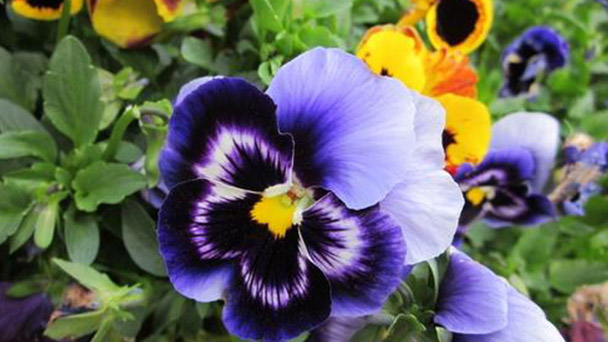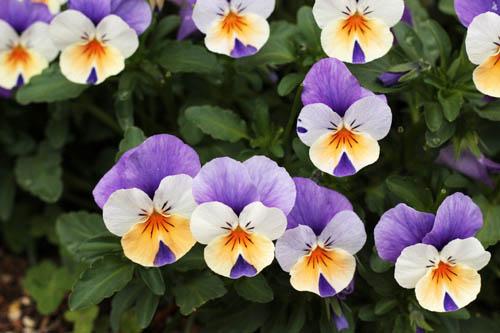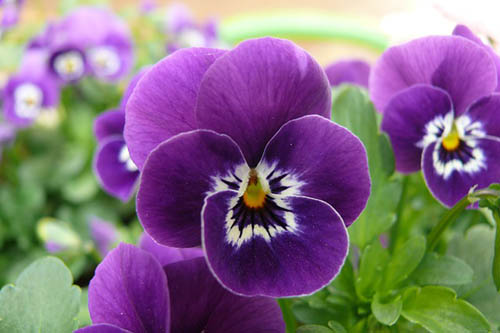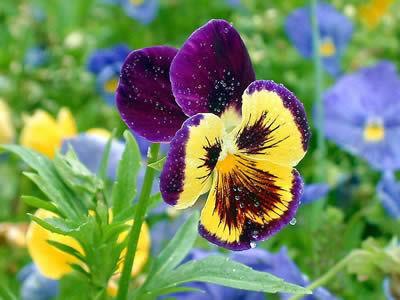The breeding methods and precautions of Viola tricolor
Written by Maggie
Nov 24 2020

During the plant of Viola Tricolor, the plants should be provided with sufficient light, water and fertilizer to provide sufficient nutrients for the growth and flowering of the plants. After the flower has withered, it is necessary to prune the plant properly to prepare for the second flowering of the plant. During the growth period, the plant should be shaded in summer, and water control and fertilization should be stopped in winter.
Viola Tricolor picture

1. Lighting for Viola Tricolor
Viola Tricolor loves light. Plants need light for growth. Put the plants outside to give them plenty of light. With sufficient light, the plants can carry out photosynthesis, which promotes the formation of chlorophyll and is conducive to the growth of branches, leaves and flowers. During the summer, when the light is too strong, move the plants to the shade to avoid burning them.
2. Moisture for Viola Tricolor
Viola Tricolor prefers wet and avoids flooding. Plants need plenty of water during growth, but should not be overwatered. During their growth, they need to be watered properly, after the soil is dry, watering enough. Keep the soil as moist as possible to avoid root rot caused by overwatering, and be aware of the need to control water during the winter months.

3. Fertilizer for Viola Tricolor
Viola Tricolor is fond of fertilizer and has a high requirement for soil, and generally requires the use of fertile and loose soil. The plant needs adequate fertilizer for growth during its growth period. Generally 7 ~ 10 days between the application of a thin liquid fertilizer. Use thin fertilizer frequently. Adequate fertilizer will help the plant grow, but be careful not to use fertilizer in winter.
4. Viola Tricolor trim
Viola Tricolor blooms repeatedly, and pruning is required to ensure secondary flowering after first failure. When pruning, it is necessary to cut off the plant's remaining flowers, leaves, old leaves, old branches and dense branches together to save nutrients. After pruning, the plant should be properly watered and fertilized to provide adequate water and nutrients for the plant.

Latest Updated
- Benefits of Bugleweed - 7 Science-backed Health Benefits
- Bugleweed Dangers & Side Effects - Is It Poisonous?
- How to Plant Evergreen Trees - What You Should Know
- When to Plant Evergreens - Grow Guide for Evergreen Trees
- 12 Wonderful Evergreen Shrubs for Your Garden
- 12 Popular Evergreen Plants with Pictures for Beginners
- When And How To Prune A Lilac Bush Like a Pro
- How to Grow & Care for Lilac Vine (Hardenbergia Violacea)
- Japanese Lilac Tree (Syringa Reticulata) Care & Propagation Guide
- Shumard Oak Pros and Cons - What to Know
Popular Articles
- Winter maintenance of Antirrhinum Majus
- How to Grow Terminalia Mantaly Tree
- How to Grow and Care for Crossostephium Chinense
- How to grow Antirrhinum Majus in spring
- Peristeria Elata (Dove Orchid) Profile: Info & Care Guide
- Underwatered Snake Plant (Sansevieria Trifasciata) - Signs And How To Fix
- How to Care for Brazilian Jasmine Plant (Mandevilla Sanderi)
- How to Grow & Care for Graptopetalum Purple Delight in Summer
- Rosa Chinensis (China Rose): Plant Growing & Care Tips
- How to Care for Baby Sun Rose (Aptenia Cordifolia)